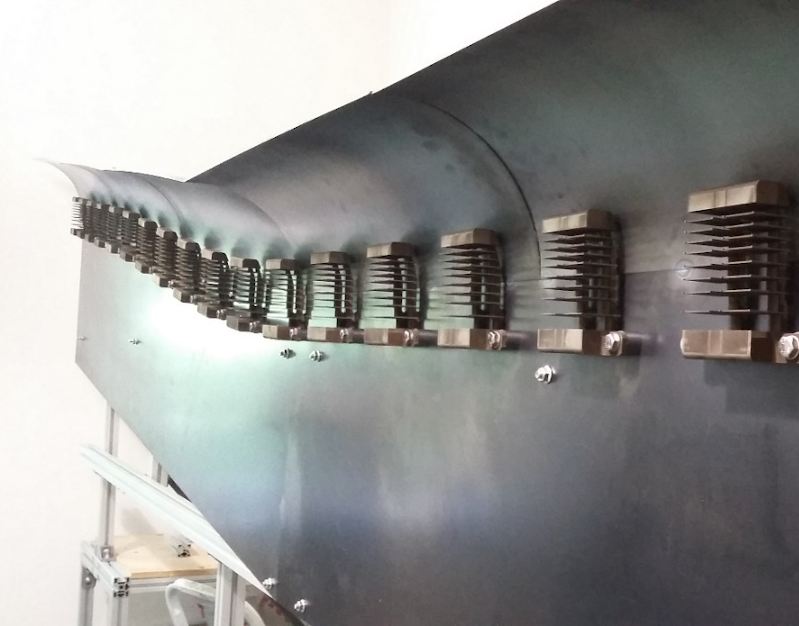The ITER device, currently under construction in the south of France, will study the potential of controlled nuclear fusion to provide energy for mankind. In order to study the behaviour of this device, a set of monitoring systems (referred to as Diagnostics) is required. These Diagnostics will provide the information required to understand the performance of the device.
GEMS Engineering is deeply involved in and fully devoted to the success of the ITER project. As a result, our main reference works are in connection with ITER, and - more closely - to its diagnostic systems.
Alignment jigs for mounting the outer vessel steady state sensors of the ITER fusion reactor
[11 January 2022]
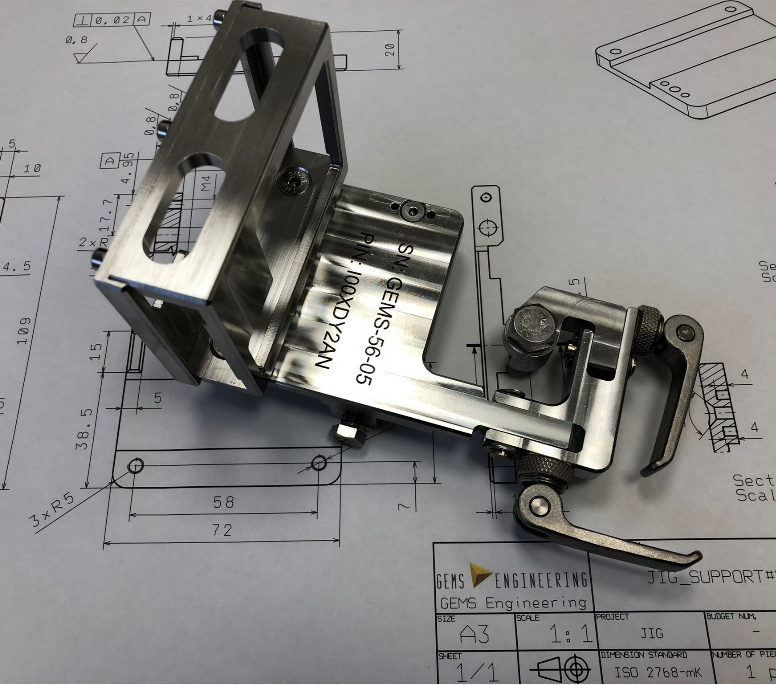
GEMS Engineering Ltd. has become the first ever Hungarian private company, that has supplied components to be used for the assembly of the ITER fusion reactor.
The ITER machine will be used for scientific-technological purposes, to help the engineers and scientists know how the fusion plasma behaves at large scales. For this reason, one of the most important components of this huge machine are the small magnetic diagnostic sensors which will need to be perfectly mounted to have accurate signals from them before, during, and after the plasma pulses. GEMS Engineering Ltd. won the contract for the design and manufacturing of jigs for the alignment of the tangential and normal outer vessel steady state magnetic sensors in three sectors (2, 5 and 8). GEMS produced 10 pieces of jigs which would be used to accurately set-up all the 60 sensors. These jigs will “only” be used for aligning the sensors and they will be removed thereafter, in order not to contaminate the components that remain attached to the vacuum vessel. During the manufacturing, exclusively certified stainless steel and bronze raw materials were allowed to be used. The jigs were shipped to the ITER Organization to Cadarache, France in mid-January 2022 and they will be used for mounting of the sensors from April onwards.
[show figures]
[hide figures]
Tests of locking mechanisms for ITER
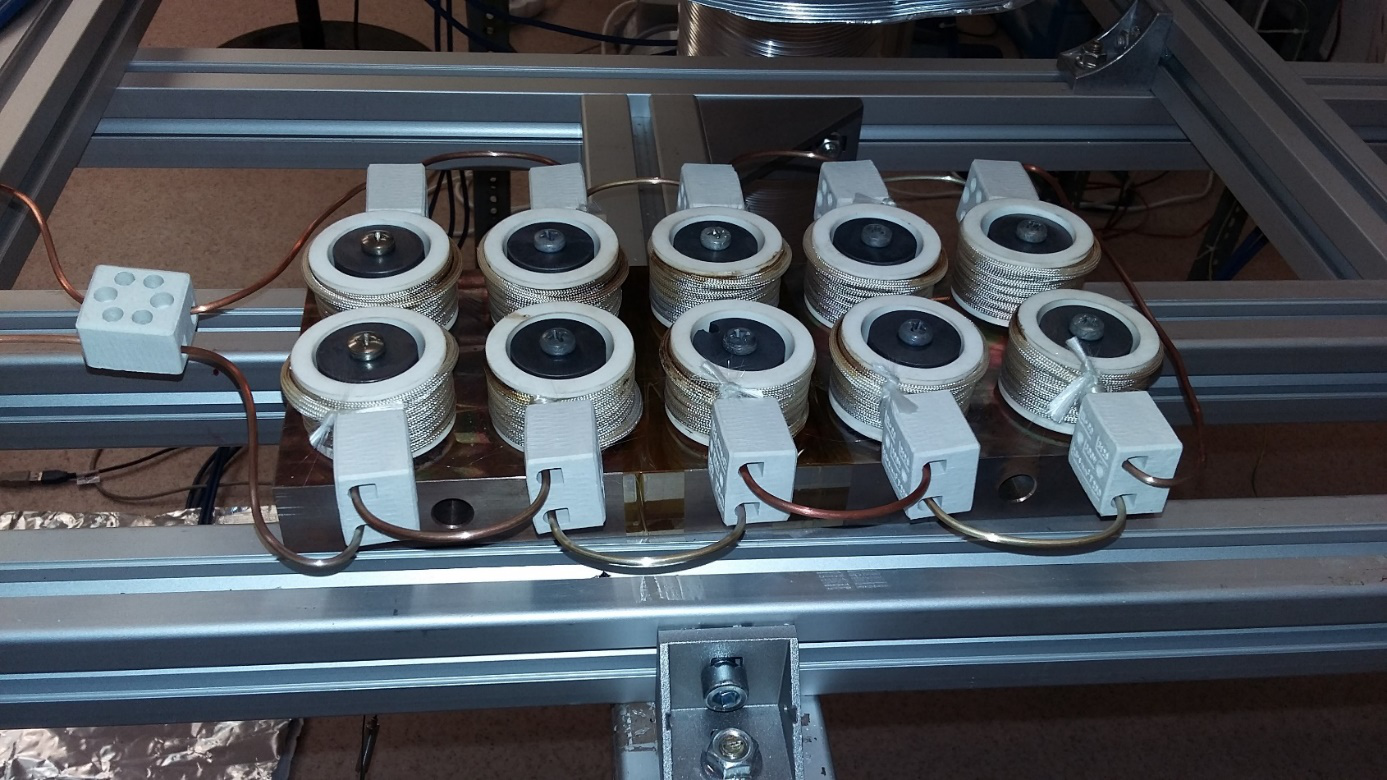
Induction heating of the bolt samples. A total of 15000 thermal cycles were performed between 100 and 200 °C
Different kinds of fasteners are used in ITER for the fixation of functional and structural in-vessel diagnostic components. The fasteners should retain initial tightening preload in vacuum under neutronic irradiation, thermal cycling and vibrations. These conditions can lead to incidental unscrewing of some bolts and nuts if they are not locked properly. They shall be equipped with some locking features which in most cases shall be remote handling compatible. One of the candidates on a role of a locking mechanism is Spiralock type thread. Custom designed so called First Wall Samples (CuCrZr) with M16 fine thread and standard M8 bolts (316L) were the subject of our studies. ITER-like thermal cycling alternating with vibration tests were applied to the components. Fasteners' loosening was monitored via periodic torque audits. For comparison with the Spiralock thread, tests with normal metric threads were also performed under the same experimental conditions.
[show figures]
[hide figures]
Vibration test equipment developed by GEMS
316L M8 bolt galvanized with copper
Thermal simulation of the induction heating cycle was also performed, in order to reach the prescribed temperature difference between the bolts’ head and thread
Infrastructure development for ITER’s in-vessel diagnostic signal transmission
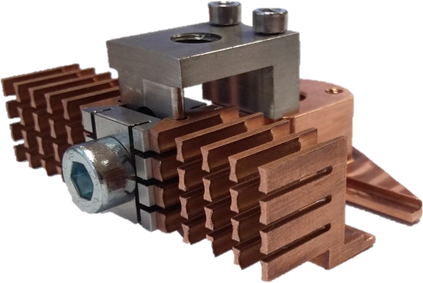
Divertor/In-vessel loom clamp
GEMS Engineering have concluded a number of contracts with ITER IO with the aim to contribute to the development of the in-vessel electrical infrastructure that is responsible for signal transmission of numerous plasma diagnostic systems. Items to develop include cable trays, cable looms, clamps, clips, connectors, etc. Activities delivered to ITER include design, finite element analysis, prototype and mock-up manufacturing and testing development of special tooling, etc.
Examples of some manufactured prototypes and mockups are below. GEMS engineers and manufacturing experts have gained, among others, plenty of valuable expertise during the manufacturing of these items in terms of manufacturing optimization (speed, optimum raw material usage, cost, and alike).
We have also tested these components for functionality, installability, assemblability, etc.
[show figures]
[hide figures]
Divertor clamps lined up on the full-scale lower port test wall
In-Port Connector for electrical tests
Marshalling area clamp before assembly tests
Feedthrough clamp with Mineral Insulated Cables (MIC) after assembly trials
ITER In-Vessel Junction Box prototype with ceramic insulation
Erosion Deposition Monitor (EDM)
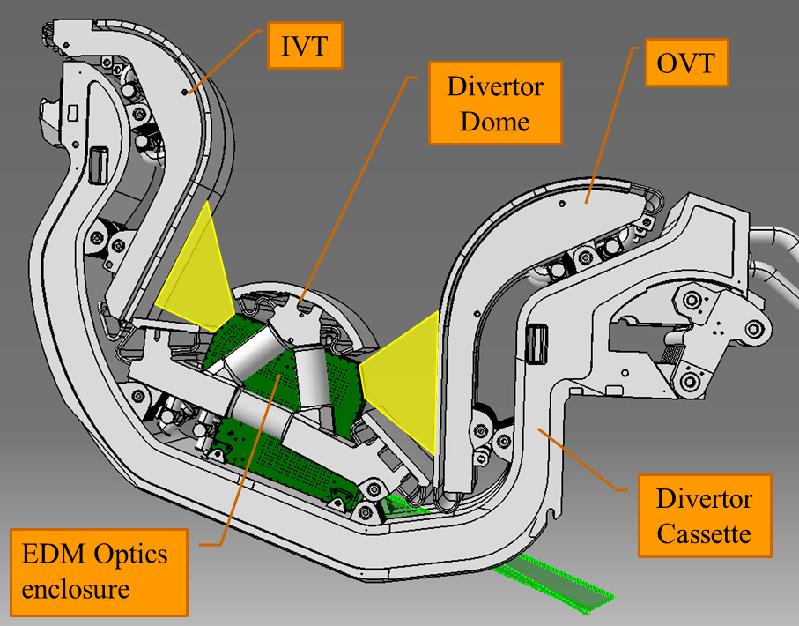
Front end optics enclosure with Vertical Targets (IVT left, OVT right)
GEMS, as the leader of the consortium composed of itself,
C3D,
Optimal Optik and AEMI has recently signed a Framework Contract with ITER IO. This 4+2 years Framework Contract targets the delivery of the mechanical design, analysis and prototyping of all components of the Erosion Deposition Monitor: the work affects the full system, from the in-vessel optics enclosure, which will be installed under the ITER Divertor dome, to the back end data collection system installed in the diagnostic hall. The goal of the Framework Contract is to progress the Erosion Deposition Monitor (EDM) design from its current state (post Conceptual Design Review, CDR);
- to the Preliminary Design Review, PDR, of the full system
- to the Final Design Review FDR, of the in-vessel and Port Cell (ISS and PCSS) components,
- deliver a set of prototype in-vessel components
- and deliver final manufactured in-vessel components ready for installation on ITER.
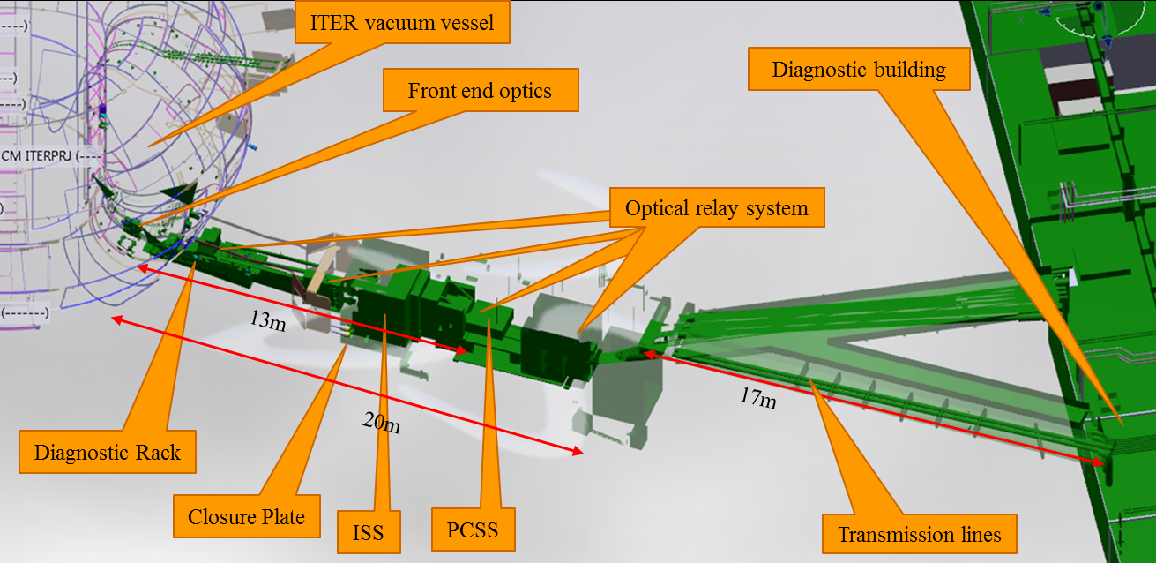
Overview of Erosion Deposition Monitor layout






